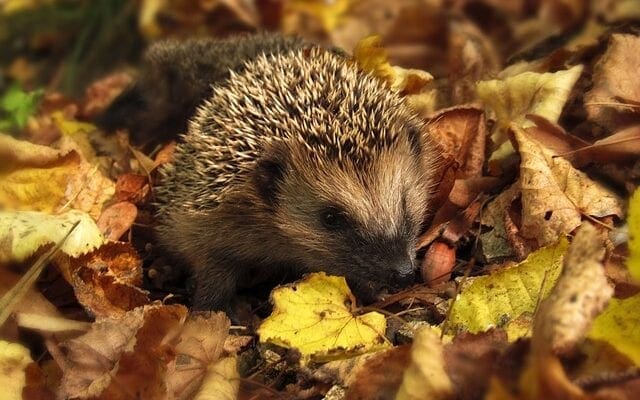Spare a thought for your garden wildlife before lighting that bonfire on Nov 5th
With the approach of November 5th and the need to dispose of seasonal garden waste such as hedge cuttings and leaves, bonfires are a common sight in autumn. Bonfire night is a great opportunity for families and friends to get together around a fire and share in the fun of fireworks, toffee apples and hot chocolate. However, when we “remember, remember the 5th of November…” we mustn’t forget that Bonfire night can pose a major threat to garden wildlife.
Hedgehogs and amphibians such as frogs, newts and toads are currently looking for somewhere to hibernate and a bonfire pile of logs, wood and leaf litter can be seen as welcome shelter from the elements. When the bonfire is freshly lit, the panicked hedgehog remains inside and perishes, usually from smoke inhalation.
However, CJ Wildlife shares some tips on how a little extra care and a few simple checks can ensure your bonfire celebrations are not a tragic affair for wildlife.
Space permitting, try to keep the dry material off the ground and in small heaps until just before lighting the fire so that you can check as you create your bonfire.
If you need to build your bonfire in advance, it is a good idea to erect a simple wire 1m fence around it so that hedgehogs aren’t tempted to climb and hide inside. If you have already built your bonfire and it has been left unattended, you must check for wildlife before setting it alight. As Hedgehogs are known to hide right in the middle at the bottom of wood piles, a wooden pole is ideal for lifting sections and much less dangerous than a garden fork.
Should you come across a ball of leaves you’ve probably found a hedgehog’s winter nest so, wearing gardening gloves, remove any tenants, together with their nesting material and safely place inside a cardboard box with holes in a quiet area of the garden or shed.
Once the celebrations are over and bonfire has completely finished and is dampened down, you can release the hedgehog with his belongings under foliage or logs with food and water, preferably the same night.
CJ Wildlife advises that a much safer way to help these creatures prepare for the cold winter months is to provide them with a safe habitat to start with, so they don’t have to stray to danger. Either homemade shelters of logs, sticks and leaves in a quiet part of the garden or a more convenient option is to add a purpose-built CJ Wildlife Hedgehog House. Adding a small pile of fallen leaves close to the entrance of the box should increase the chances of getting a tenant for the winter and the box will get used year after year.
Hedgehogs also need a good store of body fat to see them through hibernation so another way of helping them is to provide a good quality food. Ideally try a special mix designed for hedgehogs, such as the CJ Wildlife Hedgehog Feast, and avoid putting out milk which tends to make them ill, so add a supply of fresh water instead.
By following this simple advice, we can all help to ensure the survival of some of our well-loved British creatures as well as enjoying a fun-filled bonfire night without putting them at risk.
For more information on products and advice to help the hedgehogs in your garden call CJ Wildlife on Freephone 0800 731 2820 or visit www.birdfood.co.uk and request a free copy of the Handbook of Garden Wildlife. CJ Wildlife also support the British Hedgehog Preservation Society who work tirelessly to protect our British hedgehogs. For more details visit www.britishhedgehogs.org.uk





